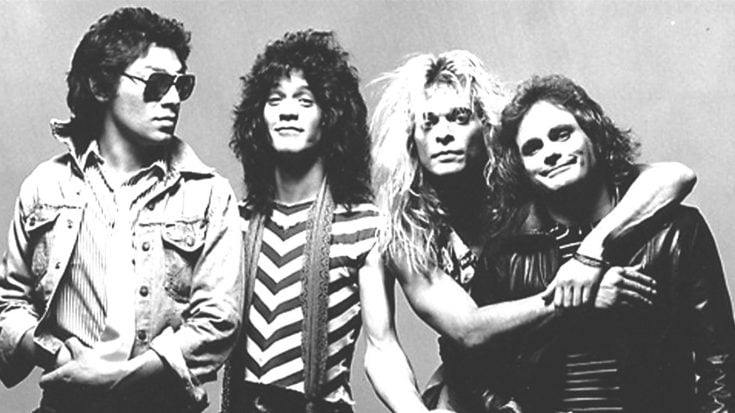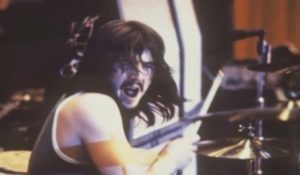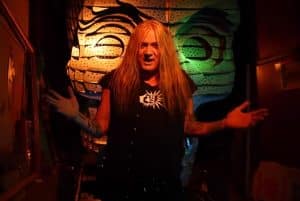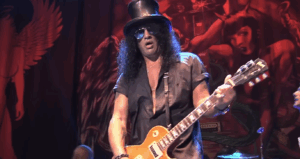5 David Lee Roth Van Halen Songs That Got Underappreciated

The classic Van Halen lineup. Alex Van Halen, Eddie Van Halen, David Lee Roth and Michael Anthony - Best Classic Bands
Some Van Halen songs were built to blow the roof off stadiums. Others, though, slipped through the cracks—overshadowed by radio favorites and MTV rotation. But that doesn’t mean they were any less electric, innovative, or essential to the band’s legacy.
David Lee Roth’s time with Van Halen wasn’t just about wild stage antics and iconic choruses. It was also a period of bold experimentation, unexpected turns, and tracks that revealed a different side of the band—sometimes overlooked, sometimes misunderstood, but always worth a second listen.
This list digs into the underappreciated gems from that era—songs that never quite got the spotlight they deserved but still carry the spirit and swagger that defined Van Halen at their core.
View this post on Instagram
“Little Dreamer”, Van Halen (1978)
Buried beneath the flash of “Runnin’ with the Devil” and the fury of “Eruption” sits one of Van Halen’s most overlooked tracks: “Little Dreamer.” It doesn’t kick down the door like the album’s hits—it saunters in with smoky confidence. Mid-tempo and reflective, the song stands apart from the band’s more frantic cuts and offers a surprising sense of restraint.
David Lee Roth, known for his high-flying vocals and stage-show charisma, dials it back here. His delivery is intimate, almost tender, as he sings about an underdog fighting to be seen. Whether it’s about a friend, a fan, or his younger self, Roth taps into a raw kind of vulnerability that rarely surfaced in early Van Halen tracks.
What elevates “Little Dreamer” is Roth’s melodic instinct. His softer approach doesn’t dull the band’s edge—it enhances it. The track proves that Van Halen could be thoughtful without losing their bite, and that Roth was more than just a party-starting frontman. He could be the reflective narrator, too.
“Take Your Whiskey Home”, Women and Children First (1980)
“Take Your Whiskey Home” is the sound of a bar closing down at 3 a.m.—and the band playing until the lights flicker out. It opens with an acoustic blues swagger, drawing the listener into a darker, grittier corner of Women and Children First. Then, in true Van Halen fashion, it explodes into a full-throttle stomp.
Eddie Van Halen’s tone, panned to one side, creates a sense of immediacy—like you’ve been dropped right into a live session. That production choice brings out the looseness of the performance, and it works beautifully. Roth leans into his role as a barroom philosopher, warning of heartbreak and hangovers without ever losing his signature smirk.
While the band was known for its arena-ready rockers, “Take Your Whiskey Home” captures something more personal. It’s bluesy, lived-in, and oddly sincere—a track that lives in the margins of their catalog but punches well above its weight. For fans willing to go beyond the hits, this one’s gold.
“One Foot Out the Door”, Fair Warning (1981)
If Fair Warning is Van Halen’s darkest album, then “One Foot Out the Door” is its anxious exhale. Clocking in under two minutes, it closes the record on an experimental, almost uneasy note. The track doesn’t end with fireworks—it hisses out like a slow leak, full of synth-driven tension and restless energy.
Eddie’s keyboard work here is jarring in the best way. Instead of offering melodic relief, it disorients, creating a feeling of instability. That nervous pulse is echoed by Roth, who sounds like a man on the edge of walking out or being thrown out. It’s not just a song—it’s a vibe: sketchy motel, keys in hand, something gone wrong.
Looking back, “One Foot Out the Door” feels like a stepping stone to the synth-heavy direction the band would take in the years to come. It’s not polished or radio-ready, but it doesn’t need to be. It shows Van Halen stretching beyond the formula, reaching for something new just before the lights go out.
“Little Guitars”, Diver Down (1982)
“Little Guitars” is the kind of track that doesn’t need to shout to be heard. Nestled in Diver Down, it stands out for its intricate guitar work and offbeat romanticism. There’s no fire-breathing solo, no hard stomp—just a crisp, rhythmic pulse that carries Roth’s playful admiration for a señorita.
The magic lies in the details. Eddie Van Halen plays a custom mini Les Paul to create the song’s unique sound, giving it a bright, percussive quality that matches the track’s breezy tone. It’s a technical showcase that doesn’t feel like one—smooth, subtle, and hypnotic. His riffing creates a whole atmosphere, almost like flamenco filtered through Southern California rock.
Roth’s delivery is more storyteller than showman here. He lets the lyrics wander with charm and curiosity, giving the track a cinematic feel. “Little Guitars” may not have the bombast of their bigger hits, but it paints one of the band’s richest sonic pictures—a quiet triumph of mood and musicianship.
“Intruder”, Diver Down (1982)
“Intruder” wasn’t even supposed to exist—but it’s one of Van Halen’s weirdest and most interesting sonic experiments. The band originally recorded it to pad out the video length of their cover of Roy Orbison’s “(Oh) Pretty Woman,” but the resulting track became a haunting mini-epic in its own right. It’s creepy, sludgy, and unmistakably bold.
Alex Van Halen’s beat sounds like a slowed-down Motown groove played in a dungeon, while Eddie layers in screeching textures using bizarre tools—including, famously, a can of Schlitz Malt Liquor. Roth adds ominous synth lines that wouldn’t sound out of place in a horror film. The whole thing feels more like a surreal short film than a rock song intro.
Yet despite its odd origins, “Intruder” shows Van Halen at their most fearless. They weren’t just a hard rock band—they were tinkerers, creators, and entertainers willing to throw something completely left-field into the mix. It may have started as a workaround, but it ended as a testament to the band’s creative instincts and refusal to play it safe.
















